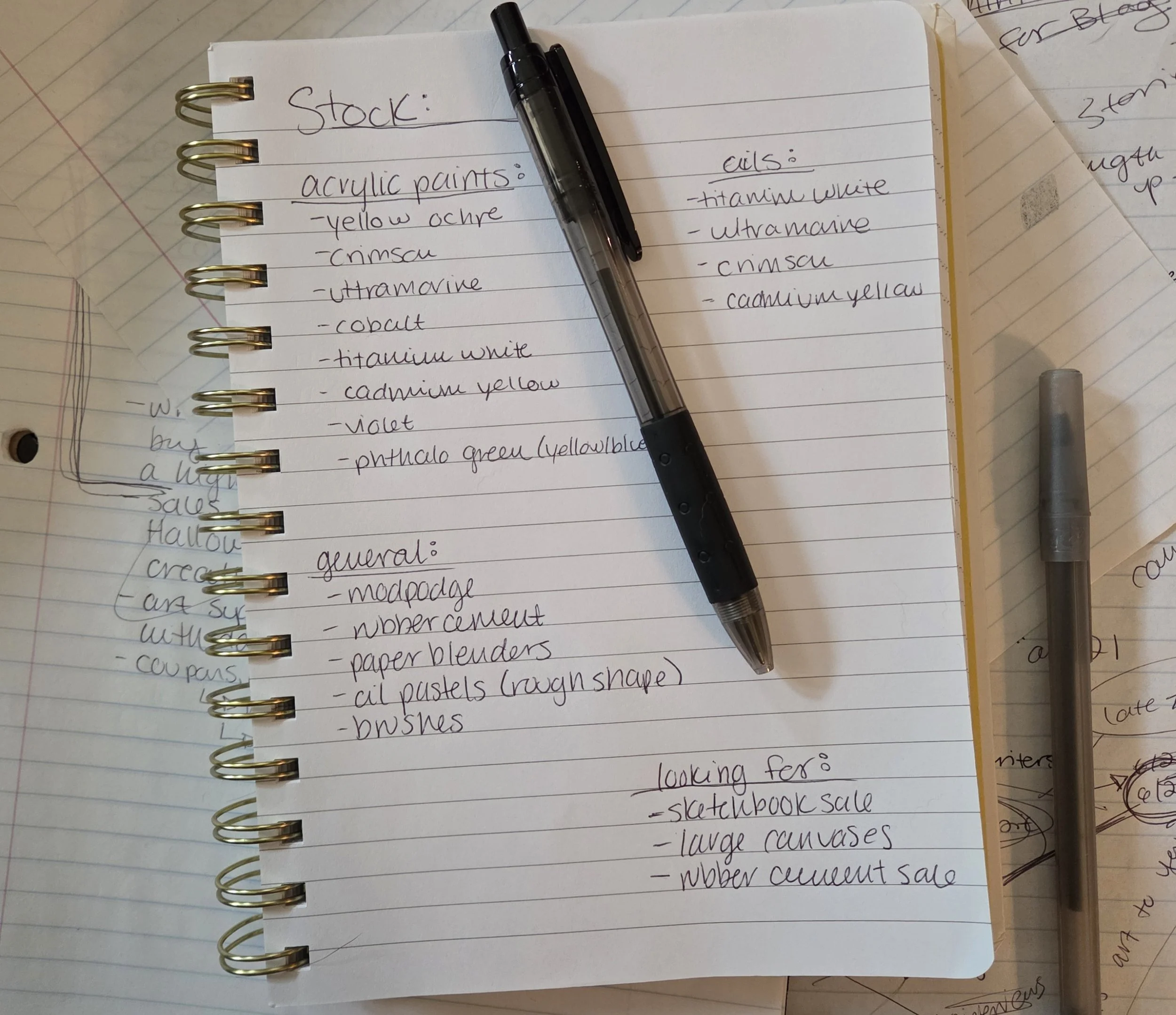Affording the Arts: Budgeting as an Artist
Creatives have become accustomed to paying high prices for the materials needed for their craft. Art supplies of high quality and durability are known to be worth the expense, however, to sustain one’s creative practice, or even start a new venture, affordability becomes a priority.
The arts often have an air that they “untouchable” and it can be argued that part of this air is the expense of the practice, and the expense of the finished pieces. Regardless of this notion, the arts are accessible and affordable to all willing to reach for them. Budgeting and knowing how, where, and when to shop are game-changers in the affordability of an artist’s practice.
There are basic budgeting techniques that one can follow, such as setting budget goals monthly, yearly, or even weekly. It can also be very helpful to track one’s spending in a journal or another method of notetaking, in order to make it easier to visibly see the wiggle-room within one’s budget. Stemming from this, is a method of budgeting referred to as making an expense budget. This method is a sort of living document, full of planning, listing everything one would need for a specific task or in this case, creative project. These can also be made monthly, or yearly, or on a project by project basis.
I believe that the best way of budgeting as an artist ultimately comes down to how the artist works. If structure is needed in one’s practice, a yearly plan of the pieces and materials needed may be a good option. However, if an artist’s mind works more like mine, spur of the moment and at times frivolous, taking stock of your materials, knowing what you use often, and planning when to replenish these materials, may be a better approach. This way, the supplies you need are on hand for when inspiration strikes.
It is with this kind of mind that I find it especially important to know how, when, and where to shop. Art supply stores, such as Micheals and Blick, have online and in-store coupons available at almost anytime via their website, free to use. Searching for sales at these stores, such as after Halloween and the holidays, can be great ways to stock up on commonly used materials. Along with this, rewards programs at these kinds of stores are not something to be tossed aside. While they can, at times, be overwhelming in the inbox, the benefits of these programs are easy to take advantage of. Finally, these stores will often have extra containers of discounted or perhaps damaged art supplies that you can ask about and purchase for a lower price.
Aside from using store provided discount opportunities, second hand art supplies can be of a huge benefit to artists. Facebook Marketplace, Craigslist, and thrift stores, as well as art centers, often contain great-second hand supplies that come at a much lesser expense than big-box art supply stores.
Affording the arts can also be an intrinsic part of an artistic practice. An artist can truly learn how to break borders when they are forced to face them. By buying a limited color palette, learning how to effectively color-mix, and even buying bigger paper that can be cut down, are great ways to push yourself as an artist while maintaining affordability. I also find it helpful to save old sketches or works that didn’t turn out as one hoped in order to create something new out of something old.
Overall, the accessibility of the arts, in terms of affordability, does not have to be called into question. There are a variety of methods that can be implemented in order to sustain one’s creative practice, and they extend beyond the methods listed above. Artists have always had a talent for thriving under limitations, and a budget is just another opportunity to push the creative process.

